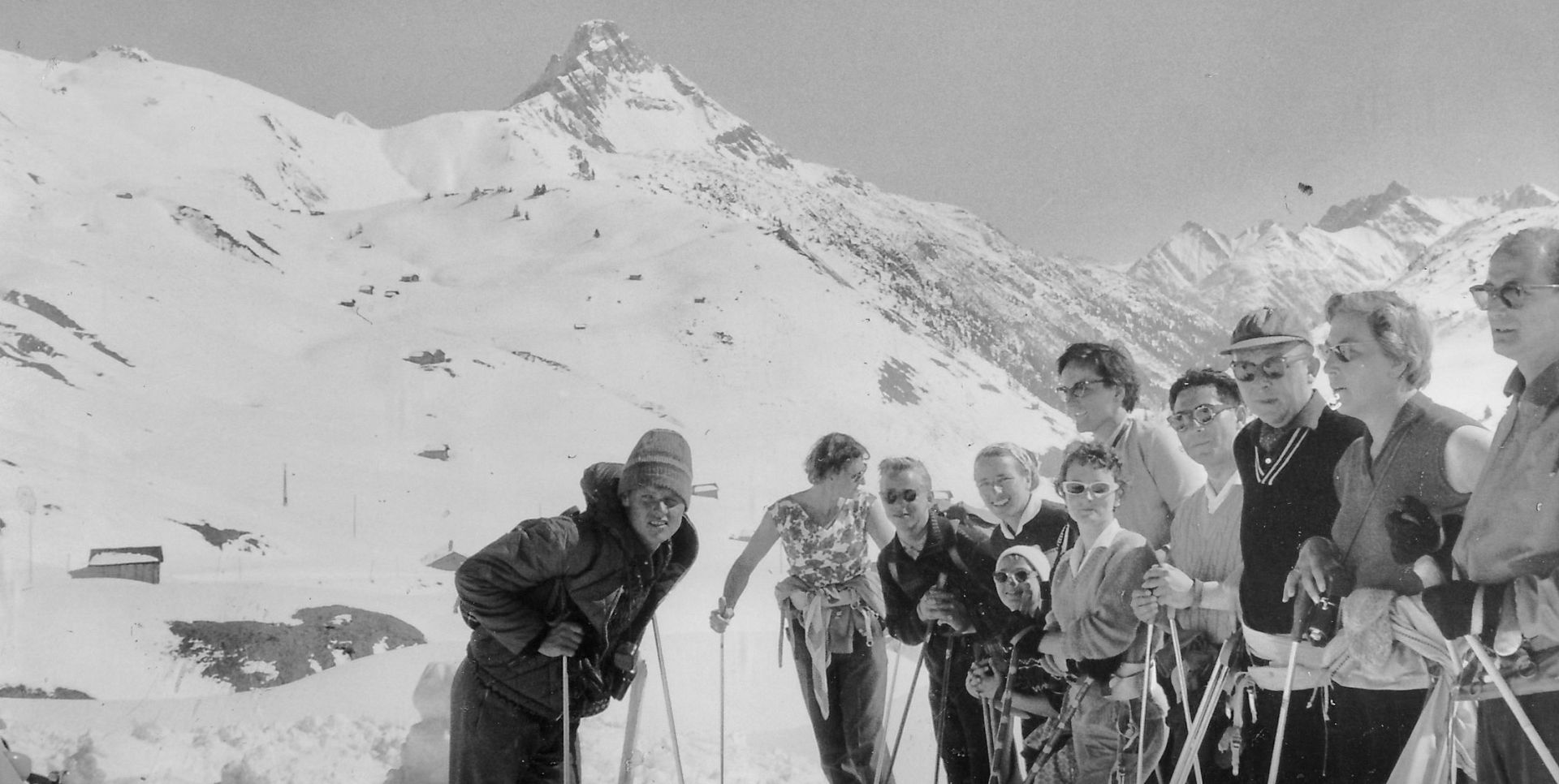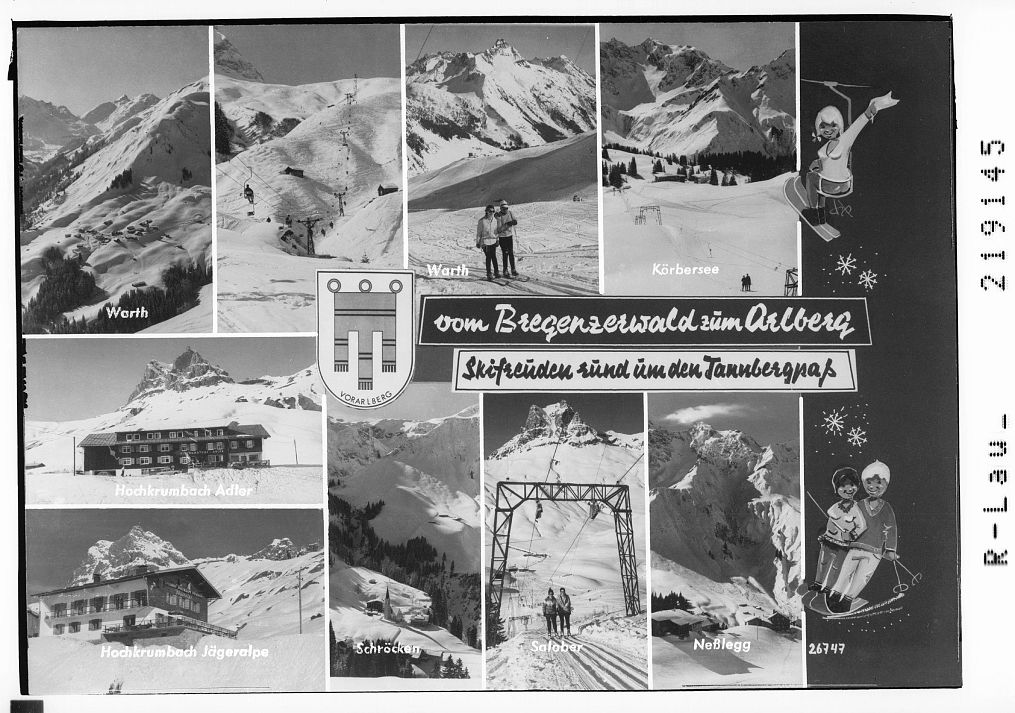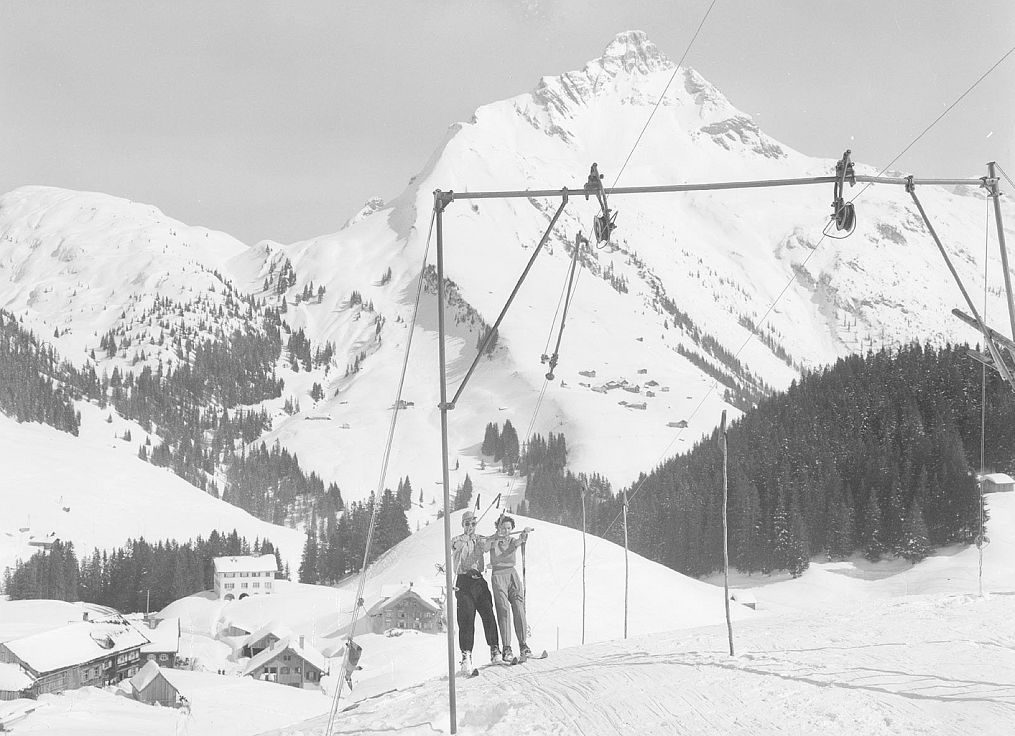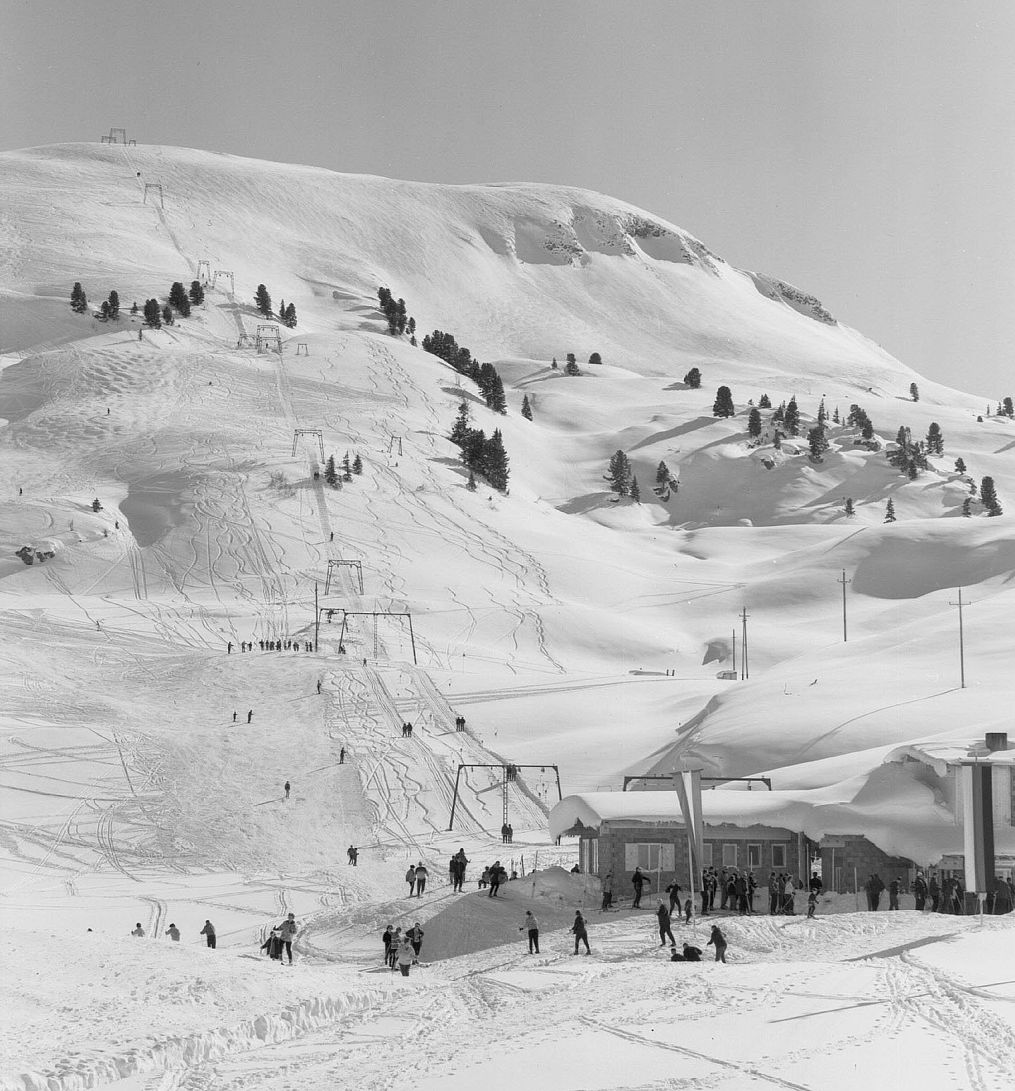
The Warth-Schröcken ski lifts in the Arlberg.
From the beginnings with ski pioneer Pastor Johann Müller, through the founding of the first ski school, to integration into Austria’s largest ski area—this chronicle tells the fascinating story of the region’s development from a remote mountain village to a modern winter sports paradise.
In the 19th century, the mountain villages of Vorarlberg, situated at 1,200 to 1,500 metres above sea level, were inhabited by farmers. In winter, heavy snowfall often isolated them. People lived off dairy farming and livestock—tourism, groomed slopes, or ski lifts did not yet exist.
However, Pastor Johann Müller of Warth wanted to stay in contact with friends in Lech even during winter—and thus became a ski pioneer. In 1894, he acquired a pair of skis from Sweden and secretly practiced skiing at night. Once he was confident on the skis, he undertook one of the first ski tours in the region. His route led over the Wartherhorn Saddle (2,200 m) with a deep-snow descent past Bürstegg to Lech, where his fellow pastor welcomed him. The return route went via the Mohnenfluh Saddle (2,300 m) and the north-facing descent back to Warth-Schröcken.
This laid the foundation for skiing in Warth. Today, visitors can still follow the route named after him with local ski guides and sign the Pastor-Müller Tour book.

Development into a tourist region.
With the opening of the Arlberg railway (1884) and the completion of the Lechtal federal road (1908), Warth became more accessible. In 1924, the first guesthouse opened, followed shortly by a ski club, ski school, hotel, and gendarmerie (1928), as well as a post office (1933). The construction of the road from Schoppenau to Schröcken (1933–1935) also opened Schröcken to car traffic.
World War II and Germany’s 1,000-mark travel restriction initially slowed tourism. It wasn’t until the construction of the Hochtannberg road in 1953 that economic growth resumed.

The first ski lifts.
In 1953/54, the first small ski lift in Warth was built: a simple Stemag lift with two bars, which could be flexibly assembled and dismantled. At the same time, a material cableway in Gehren was adapted for skiers. In 1958, the first surface lift was installed in the village centre next to the Sennhaus. By the late 1950s, Lechleiten also received a Stemag lift.
Founding of Skilifte Warth.
In 1963, the “Skilifte Warth Strolz KG” was founded, building a surface lift near the Holzgauerhaus and, in 1964, a single-chair lift at Steffisalp. The first season was a complete success, with nearly 50,000 rides.
In 1968, construction of the Wartherhorn lift began, and on New Year’s Eve, the first Ratrac piste machine arrived—previously, local students had manually prepared the slopes.
Expansion of lift facilities in the 1970s.
In 1972, the Wannenkopf and Sonnen lifts were opened. The Wannenkopf lift served as a training lift, while the Sonnen lift at the foot of the Widderstein provided gentle slopes for families and beginners. A ski bus between Steffisalp and Salober improved access, and a snow blower cleared the Steffisalp car park.
Tourist infrastructure was expanded: access roads were made avalanche-safe, and guest beds doubled—from 509 (1971) to 1,085 (1979). Sporting achievements, such as Wiltrud Drexel’s bronze medal at the 1972 Olympics and the hosting of international championships, further put Warth in the spotlight.

From the Warth ski area to the Schröcken ski area.
In 1979, construction began on the Hochalplift and the Jägeralpbahn. With these additions, Skilifte Warth had eight lifts, and Warth-Salober-Schröcken became the third-largest ski area in Vorarlberg.
In the 1980s, popularity continued to grow: in 1981/82, lift rides exceeded two million for the first time. Modernisations such as new chairlifts with weather protection and detachable lifts significantly improved comfort and capacity.
Modernisation and integration into Ski Arlberg.
From the 1990s, numerous new lift systems were built: the Karhorn double chairlift (1993), four- and six-seater chairlifts (1996–1997), and the replacement of the last surface lift with modern lifts (2003). In 2005, the lift company also invested in the Sporthotel Steffisalp.
The Auenfeldjet connecting lift (2013/14) created a direct link to Lech Zürs, and with the Flexenbahn (2016/17), Warth-Schröcken became part of Ski Arlberg—the largest connected ski area in Austria.
Today, the region boasts 300 kilometres of slopes and 88 lifts. With an average of 11 metres of natural snow per winter, it is considered exceptionally snow-sure—a paradise for freeriders, just as in Pastor Müller’s times.